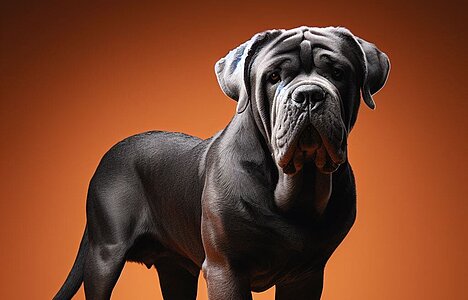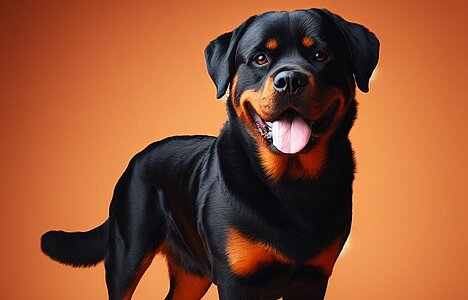The Dogue de Bordeaux: A gentle giant with a strong character
History of the Dogue de Bordeaux
The Dogue de Bordeaux has its roots in ancient France and is often associated with the Mastiffs of the Roman Empire. These dogs were originally used for hunting wild boar and guarding property and livestock. In the Middle Ages, they were also used as war dogs. In the 19th century, the Dogue de Bordeaux gained popularity as a guard dog for estates and castles. Despite a decline in numbers after the two world wars, the breed was revived in the 1960s and today enjoys great popularity among dog lovers worldwide.
Who is the Dogue de Bordeaux suitable for?
The Dogue de Bordeaux is ideal for experienced dog owners who understand the needs of a large, powerful dog. It is ideal for families with plenty of space, as it needs room due to its size and urge to move around. A house with a garden is ideal, but with enough exercise and activity it can also be happy in a city apartment.
Character of the Dogue de Bordeaux
The Dogue de Bordeaux is known for its loyal and protective nature. It is an excellent guard dog that forms a strong bond with its family. Despite its imposing appearance, it is often gentle and affectionate, especially towards children. Their patient and calm nature makes them a wonderful family dog that gets along well with other pets when properly socialized.
Appearance of the Dogue de Bordeaux
The Dogue de Bordeaux is a massive dog with a broad head and pronounced jaw muscles. Its skin is thick and wrinkled, especially around the head and neck. It has short, dense hair that can vary in different shades from mahogany to light brown. Their eyes are oval and expressive, often in a shade that matches their coat color.
Care of the Dogue de Bordeaux
Grooming the Dogue de Bordeaux is relatively easy. Their short coat needs to be brushed regularly to remove loose hair and keep the skin healthy. Due to their wrinkled skin, it is important to pay particular attention to cleanliness to avoid skin infections. Their ears should be checked and cleaned regularly, as should their teeth to prevent dental problems.
Health of the Dogue de Bordeaux
Like many large dog breeds, the Dogue de Bordeaux is prone to certain health problems. These include hip and elbow dysplasia, heart problems and stomach torsion. Regular veterinary check-ups and a balanced diet are crucial to ensure the health of these dogs. However, with the right care, Dogues de Bordeaux can live a long and healthy life.
Size and weight of the Dogue de Bordeaux
Males reach a shoulder height of 60 to 68 cm and weigh between 50 and 65 kg. Females are slightly smaller, with a shoulder height of 58 to 66 cm and a weight of 45 to 60 kg. Their imposing size and strong build make them one of the most impressive dog breeds.
Exercise requirements of the Dogue de Bordeaux
Despite its size, the Dogue de Bordeaux requires moderate exercise. Daily walks and playtime in the garden are enough to keep them happy and healthy. It is not overly active and enjoys spending time with its family, whether on a walk or just relaxing at home.
Training recommendations
The Dogue de Bordeaux is intelligent and capable of learning, but also stubborn. Consistent and loving training is therefore important. Early socialization and obedience training are crucial to ensure it is well behaved and comfortable in different situations. Positive reinforcement and patience are key to successfully training this breed.
Grooming instructions in detail
In addition to grooming, the claws of the Dogue de Bordeaux should be trimmed regularly to prevent overgrowth and associated problems. As the breed tends to be overweight, it is important to pay attention to their diet and not to overfeed them. Regular exercise and a balanced diet are essential to maintain their health.
Behavioral characteristics and interactions
The Dogue de Bordeaux is known for its calm and even-tempered nature. It is particularly fond of children and is often patient and protective of the youngest members of the family. It generally gets along well with other animals, especially if it has been used to their company from an early age. Her loyal and loving nature makes her a wonderful companion.
Recognition by the FCI
The Dogue de Bordeaux is recognized by the Fédération Cynologique Internationale (FCI) and is listed in Group 2, Section 2.1, under standard number 116. This recognition underlines the importance and standard of this impressive dog breed.
Information
Alternative Names
Country of origin
Appearance
Height at withers
Weight
Life expectancy
Breeding
FCI-Group
Standard
Section
More pictures
Similar to Dogue de Bordeaux
These dog breeds look similar to the Dogue de Bordeaux or resemble it in character.




